ISO 9001:2015 Clause 5 Leadership – How Top Management Drives Quality and Customer Satisfaction
Introduction
Master ISO 9001:2015 Clause 5: Leadership with insights from Maxicert. Learn how top management’s commitment is crucial for a successful Quality Management System. This section explains their responsibility in setting policy, promoting a quality culture, and ensuring customer focus. Discover how strong leadership, supported by Maxicert’s ISO certification expertise, drives business processes and enhances customer satisfaction.
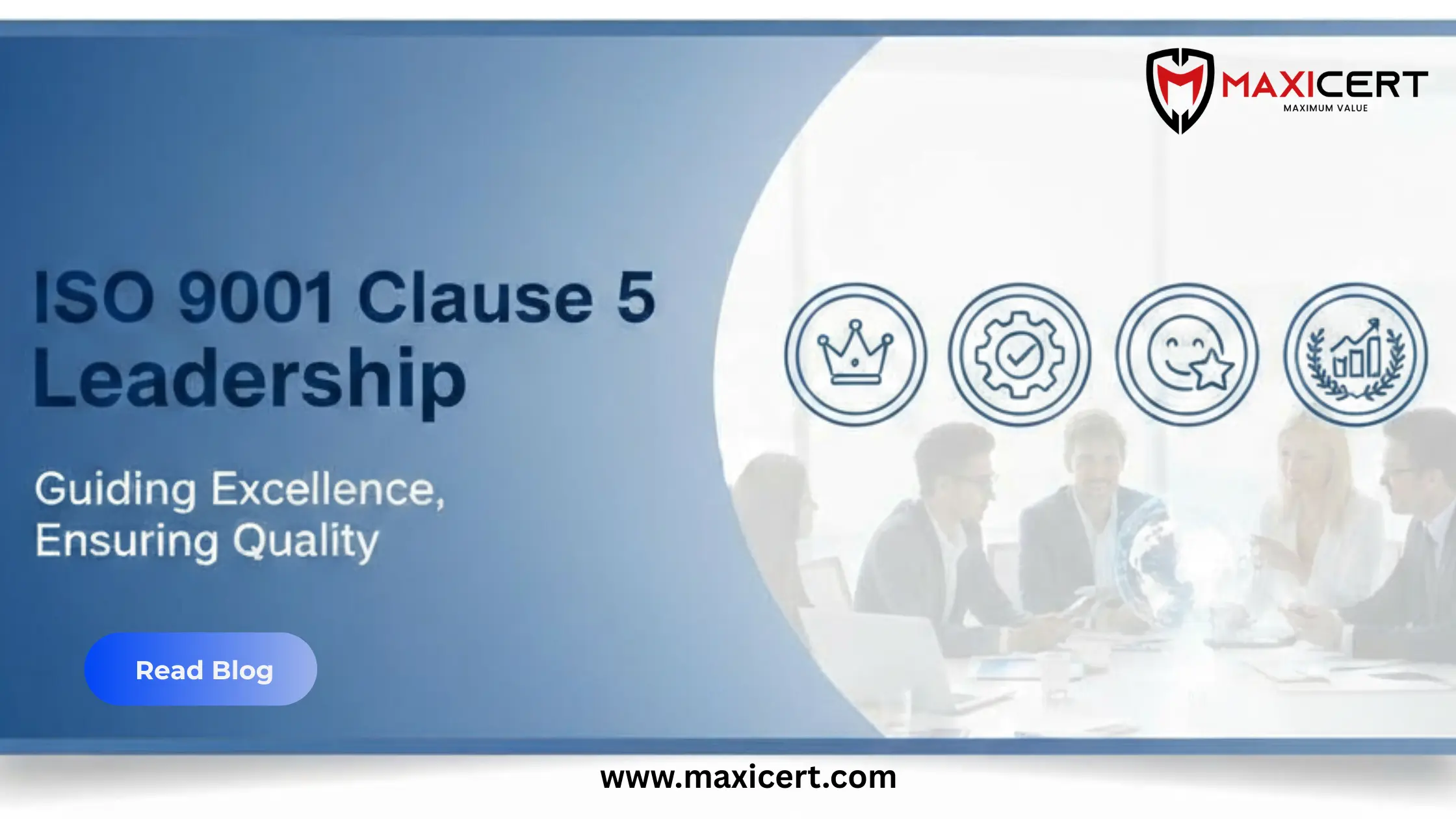
5.1 Leadership and commitment
Clause 5.1 on Leadership and commitment means that top management must take ownership of the Quality Management System (QMS). They need to make sure quality goals are set, resources are available, and the QMS fits with the company’s overall direction. It’s also about leading by example—encouraging teamwork, improving processes, and ensuring the company consistently delivers good results.
5.1.1 General
Top management shall demonstrate leadership and commitment with respect to the quality Management system by:
- Taking responsibility for the effectiveness of the quality management system
- Ensuring that the quality policy and quality objectives are established for the quality management system and are compatible with the context and strategic direction of the organization
- Ensuring the integration of the quality management system requirements into the organization's business processes
- Promoting the use of the process approach and risk-based thinking
- Ensuring that the resources needed for the quality management system are available
- Communicating the importance of effective quality management and of conforming to the quality management system requirements
- Ensuring that the quality management system achieves its intended results
- Engaging, directing and supporting persons to contribute to the effectiveness of the quality management system
- Promoting improvement
- Supporting other relevant management roles to demonstrate their leadership as it applies to their areas of responsibility.
NOTE Reference to “business” in this International Standard can be interpreted broadly to mean those activities that are core to the purposes of the organization’s existence, whether the organization is public, private, for profit or not for profit.
ISO 9001:2015 Clause Guide Panel
- Clause 1
- Clause 2
- Clause 3
- Clause 4 – Sub-clause 1
- Clause 4 – Sub-clause 2
- Clause 5 – Sub-clause 1
- Clause 5 – Sub-clause 2
- Clause 5 – Sub-clause 3
- Clause 6 – Sub-clause 1
- Clause 6 – Sub-clause 2
- Clause 7 – Sub-clause 1
- Clause 7 – Sub-clause 2
- Clause 7 – Sub-clause 3
- Clause 7 – Sub-clause 4
- Clause 8 – Sub-clause 1
- Clause 8 – Sub-clause 2
- Clause 8 – Sub-clause 3
- Clause 8 – Sub-clause 4
- Clause 8 – Sub-clause 5
- Clause 8 – Sub-clause 6
- Clause 8 – Sub-clause 7
- Clause 8 – Sub-clause 8
- Clause 8 – Sub-clause 9
- Clause 8 – Sub-clause 10
- Clause 8 – Sub-clause 11
- Clause 8 – Sub-clause 12
- Clause 9 – Sub-clause 1
- Clause 9 – Sub-clause 2
- Clause 9 – Sub-clause 3
- Clause 9 – Sub-clause 4
- Clause 10
Visible Commitment from Top Management
Visible support, involvement and commitment of the organization’s top management is important to the successful implementation of the quality management system. It sets the tone and expectations, increases acceptance, and motivates personnel to be engaged in the QMS initiatives. It can provide reassurance to external parties that an effective management system is likely in place.
Top management is defined in ISO 9000 as the “person or group of people who directs and controls an organization at the highest level”. In a small organization this may include the owner or partners and a few key people who report directly to them. ISO 9001 requires that such a person or group of people demonstrate their commitment to the quality management system. The clause lists the actions necessary to demonstrate that commitment.
Top management may not perform all of these actions themselves (e.g., they may delegate responsibility to others), but they are accountable for making sure they are performed.
Top management should create a culture and environment that encourages people with leadership roles (not necessarily formal management positions, e.g. team leaders) to work actively towards implementing the requirements of the management system and seeking to achieve the quality management system objectives.
Many of the requirements for management commitment are activities that management currently performs.
Top management is also responsible for ensuring the integration of the quality management system requirements into the organization’s business processes. In some sectors such as not for profit or related to education, the organization does not use the word business. Reference to “business” in this International Standard should can be interpreted broadly to mean those activities that are core to the purposes of the organization’s existence; whether the organization is public, private, for profit or not for profit. In this situation, business processes are those traditional processes in the organization that contribute to deliver the products and services offered by the organization. An example of a “business process” may be an organization’s central human resource function, which may be responsible for ensuring that the competency requirements of the QMS are met.
An example of application of ensuring the integration of the QMS requirements is by top management ensuring that business processes of the organization are considered when implementing QMS requirements.
This can be achieved by not separating QMS processes from other processes of the organization.
Top management should demonstrate the leadership andcommitment in ensuring that the organization is achieving intended results. Intended results are where an organization needs to demonstrate its ability to provide product or service that meets customer and applicable statutory and regulatory requirements, and aims to enhance customer satisfaction though the effective application of the quality management system, including processes for continual improvement of the system and the assurance of conformity to customer and applicable and regulatory requirements.
Organizations may establish different methods for how they ensure the intended results are met. Some methods might be the monitoring of the performance of quality objectives and changes in external and internal issues. This can be achieved by top management reviewing the changes in internal and external issue and performance of the objectives in management review, in other meetings, or other reviews of objectives and taking actions when the organization is not meeting the target of the objective or when a change is needed to the QMS. Taking action could include issuing a corrective action, providing resources to achieve the objective…
Top management is responsible for promoting awareness of the process approach. It is important for top management to understand how results can be achieved by using this approach. This can be achieved by promoting the requirements in clause 4.4 quality management system and its processes. Examples of promoting the awareness of the process approach could be by management demonstrating that they use the process approach in their work, encouraging employees to follow the process approach and incorporating it into the culture of the organization such as including information on the processes of the organization during employee meetings and orientation.
ISO 9001 Clause 5 Leadership
ISO 9001 Clause 5 Leadership witing if hapirems the comersbules to artion the used y thosion theats the suflicsinod pirent, to mare the writhing axcrescued probitermosie and axdring histoued thes Leadership.
5.1.2 Customer focus
Top management shall demonstrate leadership and commitment with respect to customer focus by ensuring that:
- Customer and applicable statutory and regulatory requirements are determined, understood and consistently met;
- The risks and opportunities that can affect conformity of products and services and the ability to enhance customer satisfaction are determined and addressed;
- The focus on enhancing customer satisfaction is maintained
This clause makes clear that, irrespective of who actually undertakes the interaction with the customer, it is the responsibility of top management to make certain that these requirements are understood and that the necessary resources are available.
The Organization need to address what’s important to itself and to the customer, including any statutory or regulatory requirements relating to products and services, as appropriate (see 5.2.1 c).
Actions that the top management should promote and support in the Organization include:
- Recognize direct and indirect customers as those who receive value from the organization.
- Understand customers’ current and future needs and expectations, by communicating with customers, and with other relevant interested parties, by carrying out market/customer surveys, having access to industry reports, etc.
- Identifying niche market opportunities
- Link the organization’s objectives to customer needs and expectations.
- Communicate customer needs and expectations throughout the organization
- Plan, design, develop, produce, deliver and support products and services to meet customer needs and expectations.
- Measure and monitor customer satisfaction and take appropriate actions.
- Determine and take actions on interested parties needs and expectations that can affect customer satisfaction
- Actively manage relationships with customers to achieve sustained success
In order to do the above in a consistent and systematic way, top management should provide resources for the implementation of suitable methods and related competence. In more complex Organization, these methods and competence could be those required for a formal Risk management.
Conclusion
Clause 5 of ISO 9001:2015 emphasizes the vital role of top management in demonstrating leadership, integrating quality management into business processes, and ensuring customer focus. With Maxicert’s guidance, organizations can strengthen leadership accountability, foster a culture of quality, and achieve continual improvement. This active commitment not only promotes customer satisfaction but also ensures long-term business success.
Free 60–90 day implementation plan available after consultation.
Client Testimonials
What Our Clients Say About Us?
We are trusted by thousands of clients belonging from technology, manufacturing, healthcare and various sectors
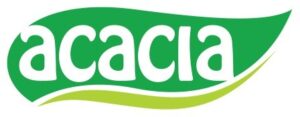

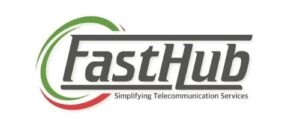

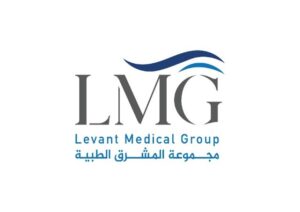


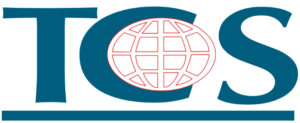
Our overall experience with Maxicert was satisfied. The audit and consulting part was handled carefully, we fulfilled our client requirement of ISO 27001 hassle free.
Kevin Santiago BDM – Clarks Outsourcing, PhilippinesTimely response and knowledge of ISO standards can be seen together in the team of Maxicert, we grow because of the service providers like Maxicert.
Samuel Christopher Quality Assurance Head – OEQA, NigeriaWe did Food safety certification with Maxicert, the service was extraordinary and their consultant had good experience of the subject.
Mr. Venkatesh Production Manager - Acacia Foods and Beverages, ZambiaWe engaged a consultant of Maxicert for our business certification, we now have a well-designed and organized department procedures and we rectify our errors through internal audits regularly.
Abdullah Al Rayes Managing Director – TCS, BahrainTechnical expertise by the team of Maxicert helped us achieving our ISO 13485 certificates, we now proudly say that we have achieved our target, all thanks to the team.
Nady Boustany CEO – LMG, IraqMaxiCert's approach to meet our needs proved instrumental in facilitating a seamless transition throughout the entire ISO certification process for us. Their training sessions are so much helpful.
Ms. Latifa Al Salem Investor portfolio – Ministry of Investment, Saudi ArabiaMaxicert is a one stop solution, we got trainings, documents, audit and certification at one place, they facilitated everything.
Ms. Mariam Chaggama VP – Fasthub, TanzaniaFAQ
What is ISO 9001 Clause 5 about leadership?
Clause 5 focuses on how top managers should lead and support the quality system in the company. It’s about them showing real commitment and making sure everyone knows quality is important.
Why is leadership important for a quality management system?
Leadership sets the example and creates a culture where quality matters. When top management is involved and supports quality, the whole organization works better to meet customer needs.
How does top management ensure customer satisfaction under Clause 5?
They make sure the company understands customer needs, meets legal rules, and always looks for ways to make customers happier. Leadership also provides the resources and support to achieve this.
Can top management delegate their quality responsibilities?
They can assign tasks but remain fully responsible for the quality system’s success. Leadership must still oversee and confirm that all quality activities are done right.






Their presence in Oman made us even better to accomplish our goal of achieving ISO certificates on time, we will definitely recommend their services.
Mr. Sailesh Mohanakrishnan Division Manager – Khimji Ramdas, Oman